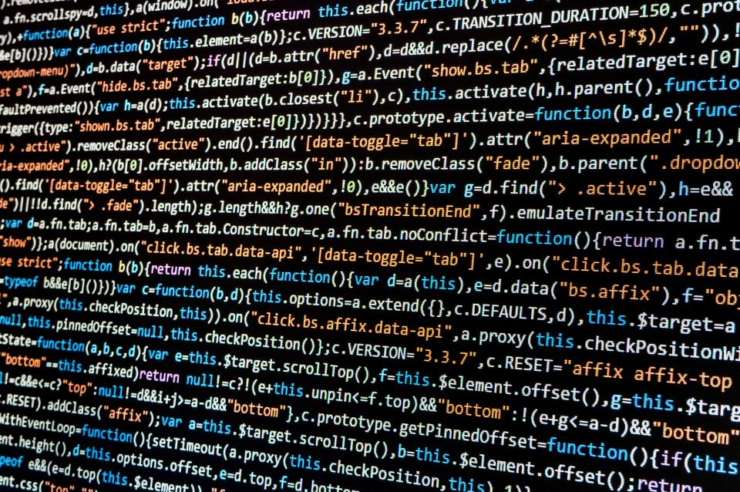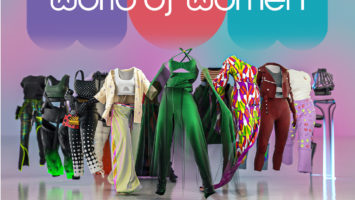As NFTs get more and more popular, more people are interested in creating their own NFTs. However, all the technical skills and knowledge it takes to mint an NFT can be daunting for people with little-to-no coding experience. To say nothing of minting an entire NFT collection.
Luckily, there are a number of tools out there today that can help people to create NFTs with no coding necessary. Let’s dive into the NFT minting process and some easy, no-code tools for minting your very own NFTs.

Breaking down the steps to create and sell NFTs
Firstly, it’s important to note that we’ll be talking specifically about art NFTs and generative collections. While NFTs can be pretty much anything – like event tickets, or music – NFT art is what dominates the space at the moment. What’s more, we’re going to separate the process for creating single, or 1-of-1 NFTs, and how you can go about creating an entire generative NFT collection. All with no coding needed.
Creating the art for your NFT
This part is self-explanatory. You’re going to need the files for the art pieces you want to mint first and foremost. This step will be pretty easy when it comes to 1-of-1s. Many NFT artists and photographers get started with 1-of-1s precisely because it doesn’t require that much more than creating the art itself.
On the other hand, if you’re an artist, or an individual or team working with an artist on a generative NFT collection, there are going to be more steps involved. For a more in-depth look at different ways to create art for an NFT, check out our Complete Beginner’s Guide on the topic.
Smart Contracts
Smart contracts are a vital aspect of NFTs. For one thing, they store ownership and transaction history. Most importantly, they are what allow for specific kinds of transactions to happen on a blockchain without the need of a third-party (hence the “smart” part). Essentially, they are what enable NFTs as we know them to exist.
This is an incredibly simple overview of smart contracts so if you’d like to know more, have a look at our guide on smart contracts and how to read them.

Minting through an NFT marketplace
After you create your NFT artwork, but before you can sell it, you will need to mint it. This refers to the process of creating the actual non-fungible token stored on the blockchain that represents your artwork.
Most NFT marketplaces like OpenSea, Rarible, or Foundation (which requires an invitation) will allow users to mint NFTs. It’s as easy as clicking a few buttons on a website! Keep in mind though, that because this is a blockchain transaction, there will be transaction fees. And if you’re minting on Ethereum, those gas fees can be quite steep.
Lazy-minting an NFT
Lazy minting refers to the process of using a platform to mint your NFT without having to pay gas fees upfront. Instead, the smart contract for your NFT is only deployed on the blockchain once somebody buys it. In addition, with lazy minting, you don’t need to provide your own smart contract.
Two popular options for lazy minting are OpenSea and Rarible. While OpenSea has more users, lazy minting on Rarible is completely free. In contrast, OpenSea has a one-time fee for listing your first NFT. Each mint after that is free though.
Keep in mind: you trade aspects of control for ease when minting via a marketplace
While this is just about the easiest and cheapest way to mint an NFT, there are tradeoffs. And obviously using a platform’s smart contract gives you less control than your own. Indeed some Web3 purists would advise against selling NFTs without using your own contract and website. At the same time, this might not be a major issue when you’re just getting started.

Creating Art for Generative NFT Collections
When people think about NFTs, they probably go to the most famous NFT avatar projects like the Bored Ape Yacht Club, CryptoPunks, and World of Women. All these are generative NFTs. In other words, NFTs in a collection that all have the same base character, but have different individual traits.
The “generative” part of these NFTs comes from the fact that the final composition of each NFT is not drawn, but rather put together by a computer algorithm from a selection of layers that an artist creates. That’s what allows artists to turn 100s of distinct traits, into 1000s of NFTs.
Can I make a generative collection without a dev?
So let’s assume you are a digital artist or are working with one, and you want to create a generative NFT collection. Creating the different traits and layers for an NFT shouldn’t be too much of an issue (just time-consuming!). When it comes to generating the art in a large NFT collection though, that process has long required hiring a developer, or dev.
It’s a pretty broad term but generally, when people talk about NFT project devs they’re referring to the people who write the smart contracts and/or generate the collection from the art.
Most would say that hiring a professional dev to help create your NFTs is the best route to take. Most quality NFT projects go this route. However, if you’re looking for a cheaper, “DIY” option, there are ways As a matter of fact, different platforms are popping up that enable you to generate entire collections. One such platform is NFT Art Generator.

NFT Art Generator
This site allows you to create layers, import your art assets and generate entire NFT collections. It handles just about everything, allowing you to select rarities for traits and groups of traits, edit the metadata for your collection, and preview the generated artworks.
It even has a free version for up to 100 assets. Though it’s important to note that the free version carries a watermark.
The paid tiers start at $179 for up to 1,000 assets and go up to 10,000 assets for $389. What’s more, NFT Art Generator can even create smart contracts for your NFT collection. For the smart contracts, it charges 4.9% royalty on each NFT sold in the primary sale.
Are you tired of missing important NFT drops?
Just check out our NFT Calendar !
Subscribe to our hot social media and don’t miss anything else
If you’re old school :
All investment/financial opinions expressed by NFTevening.com are not recommendations.
This article is educational material.
As always, make your own research prior to making any kind of investments.
Owners, holders, fans, community members, whales… Want to boost this article by featuring it on top of the Homepage? ==> Contact us!






















Comments (No)